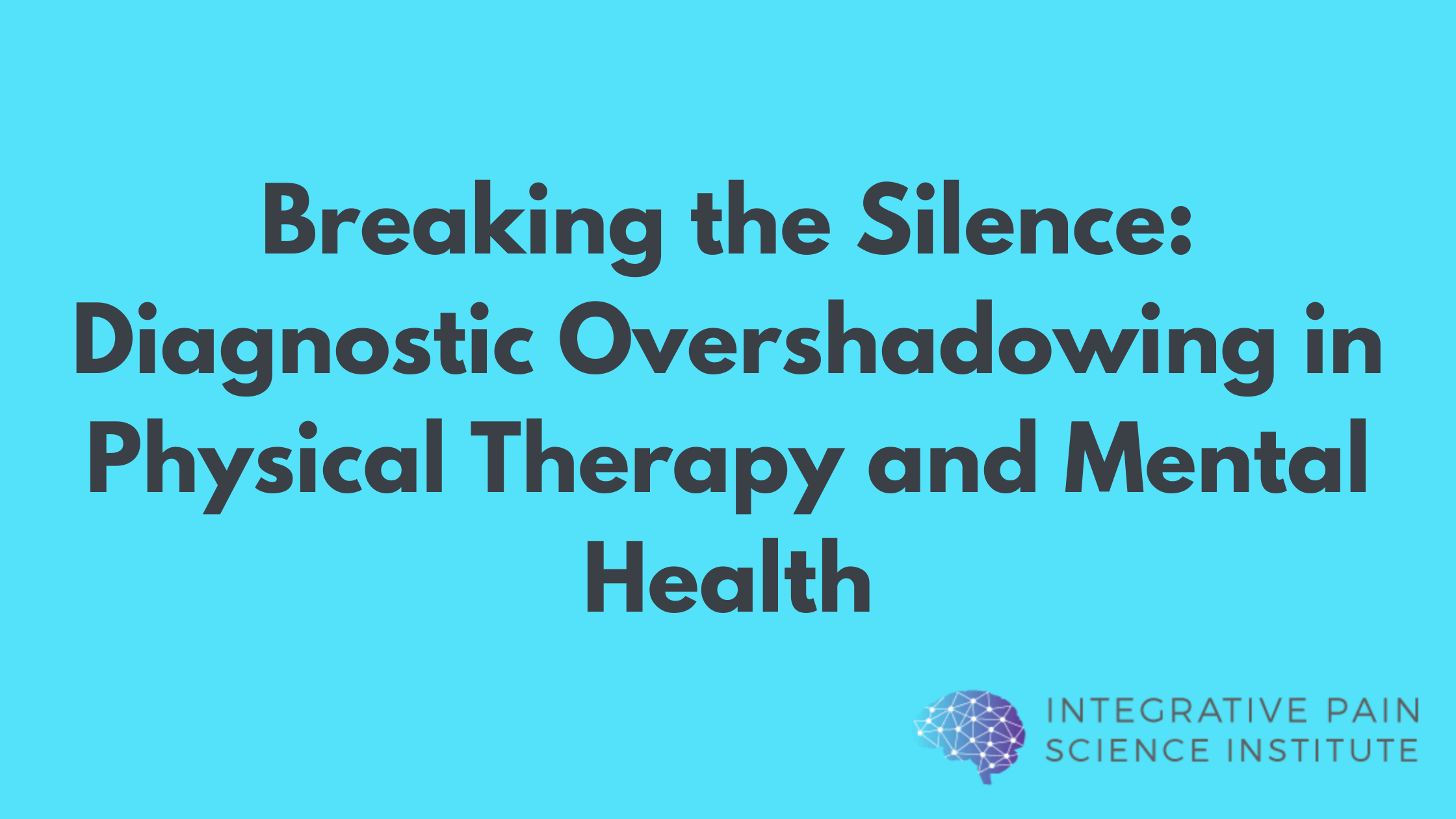Chronic pain isn’t just a condition we treat as physical therapists. For our patients, chronic pain is a personal struggle that bleeds into all aspects of their lives.
Though it is often manifested as physical pain, the experience of dealing with chronic pain over the long term can create deeper, harder-to-access layers of mental and emotional hardship.
Studies show that these hardships can lead to a vicious spiraling effect when it comes to chronic pain, often leading to anxiety, depression, anger and fear. Not only can these states increase perception of pain, but they can lead to reduced activity and avoidance of behavioral changes that can improve the condition.
While it’s manifested (and often treated) as physical pain, the experience of dealing with chronic pain over the long term can create deeper, harder-to-access layers of mental and emotional hardship. Share on XChronic pain causes fear – plain and simple – and this fear often causes a person to try and avoid the problem altogether, perhaps leading to more convenient “solutions”, like inactivity or the dangerous long-term use of opioids.

That is why the acceptance of pain and, more importantly, acceptance of the fear that comes with it, can be the first step to effectively and holistically treating chronic pain with PT and nutrition.
This begins with Acceptance and Commitment Therapy (ACT).
Acceptance and Commitment Therapy for Chronic Pain
Acceptance and commitment therapy is a form of counseling that uses mindfulness and the acceptance of life’s difficulties as a way of moving towards behavioral changes and solutions.
Rather than teaching people strategies to better control their thoughts, patterns, emotions or sensations (as in cognitive behavioral therapy), acceptance and commitment therapy teaches people to be mindful of such challenges – even to embrace them – in order to bring about change and action.
It’s called achieving “psychological flexibility,” says Lance M. McCracken, a professional in behavioral medicine in London and a leading researcher in ACT.
According to McCracken, psychological flexibility is “the ability to be more aware, more focused on goals, and more engaged. Another aspect of psychological flexibility pertinent to chronic pain … is called committed action, which involves goal-directed, flexible persistence.”
Such goals include replacing avoidance of one’s painful experiences with acceptance, overcoming lack of direction by establishing a set of values, and taking small steps toward said values through committed action.

In short, acceptance and commitment therapy strives to create hope through acceptance, making it possible for one to feel more in control of their chronic pain condition.
“The message of traditional pain management is that you’ve got to manage the pain first, and then get back to your life. But entire lives can be lost in the pursuit of pain relief that may never come,” said Dr. Kevin Vowles, clinical psychologist and associate professor at the University of Mexico. “The message of acceptance and commitment therapy is that it’s possible to begin to rebuild one’s life even with pain.”
[Read more about: Acceptance and Commitment Therapy for Chronic Pain]
Dr. Tatta’s simple and effective pain assessment tools. Quickly and easily assess pain so you can develop actionable solutions in less time.
Research Supporting ACT for Chronic Pain
Studies conducted in the last few years show that acceptance and commitment therapy can indeed offer relief to those suffering from chronic pain – a population as big as 25 million in the U.S. alone, according to the National Institutes of Health.
Studies just within the last couple of years show that acceptance and commitment therapy can indeed offer relief to those suffering from chronic pain. Share on XResearch published in the June 2017 edition of Journal of Pain, based on a study which examined 412 adult participants from a London-based pain management center – found that 67 percent showed “meaningful improvements”, following the completion of an acceptance and commitment therapy program.
“Research has shown that most of the six ACT processes, all of those so far investigated, correlate with improved daily functioning and emotion well-being in patients with chronic pain,” researchers concluded in similar studies.
As physical therapists, we understand that such psychological treatments alone – regardless of how effective they may be for some – should support a more holistic approach to pain management that involves both functional nutrition and movement-based interventions.

By making ACT part of your professional toolbox as a physical therapist who treats chronic pain, you’ll not only help your patients achieve greater, longer-lasting success in overcoming, but you’ll set your clinic apart within your respective PT marketplace.
[Read: Combining ACT with Physical Therapy]
At the Integrative Pain and Science Institute, we’ll show you how to make these services a central part of your practice. Sign up here to be placed on the waitlist for our course “ACT for Pain,” taught by chronic pain experts JoAnne Dahl, PhD and Joe Tatta, PT, DPT.
Click here to learn about the Certification in Functional Nutrition for Chronic Pain!



